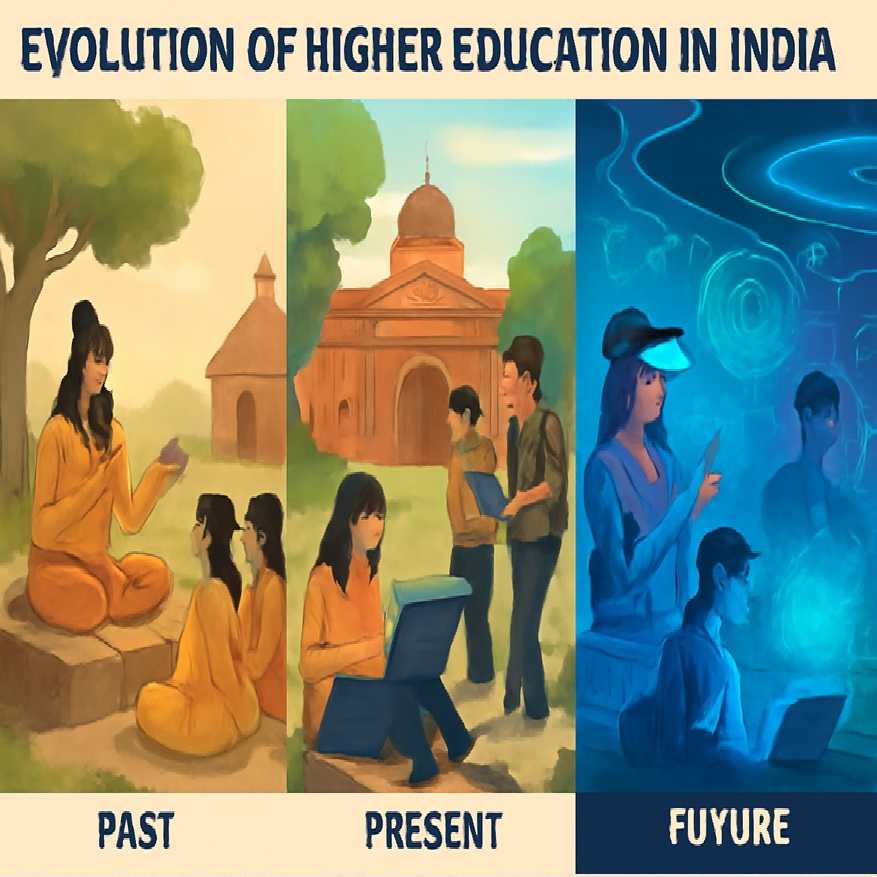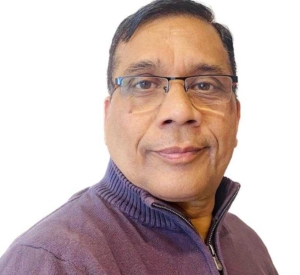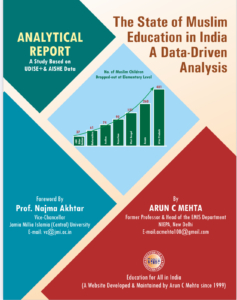 The Evolution of Higher Education in India: Past, Present, and Future
The Evolution of Higher Education in India: Past, Present, and Future
The Evolution of Higher Education in India: Past, Present, and Future
Introduction
The story of higher education in India is one of rich historical roots, transformative reforms, and visionary policy-making. From the ancient universities of Nalanda and Takshashila to the knowledge-driven aspirations of the 21st century, Indian higher education has evolved through colonial legacies, post-independence nation-building, technological disruption, and contemporary global challenges. Today, India’s higher education system is the third-largest in the world, marked by robust expansion, inclusivity efforts, and innovative trends[16][9]. This article provides a comprehensive overview of this journey – with a focus on critical data trends, legislative reforms, and future directions based on current evidence including data from the All India Survey on Higher Education (AISHE).
Review of Literature
- Pre-Independence & Colonial Era: Institutions like the University of Calcutta, Bombay, and Madras established Western academic models. Post-independence, university education became a nation-building priority, expanding rapidly but often critiqued for uneven quality.
- Reforms & Modernization (Post-1990): The National Policy on Education (1986, and revised versions) and economic liberalization led to significant private sector participation and a focus on technology and professional courses.
- Contemporary Analyses: Recent studies highlight challenges such as infrastructural deficits, the need for skill-based curricula, and inequalities across gender and regions, but also opportunities for digital transformation and innovation[8][20]. Recent years have seen a surge in the study of regulation, accreditation mechanisms, and internationalization efforts as captured in research by ICRIER and others.
Key Acts, Policies, and Data Figures
Legislative Framework and Major Policy Initiatives
| Year | Act/Policy | Main Focus |
|---|---|---|
| 1956 | University Grants Commission Act | Quality Assurance, Funding, Regulation |
| 1987 | AICTE Act | Technical Education Standards |
| 2020 | National Education Policy | Multidisciplinary, GER Target, Flexibility |
| 2018 (proposed) | Higher Education Commission of India Bill | Unified Regulation, Autonomy |
Annual AISHE Data: Key Figures and Trends (2017-18 to 2021-22)
| Academic Year | Number of Higher Education Institutions | HE Enrolment (Millions) | GER Overall (%) | GER Female (%) | GPI |
|---|---|---|---|---|---|
| 2017-18 | 45,037 | 36.04 | 26.3 | 23.2 | 0.88 |
| 2018-19 | 45,051 | 37.60 | 27.1 | 23.9 | 0.88 |
| 2019-20 | 45,341 | 38.70 | 27.4 | 24.4 | 0.89 |
| 2020-21 | 46,121 | 41.00 | 28.3 | 25.7 | 0.91 |
| 2021-22 | 45,477 | 43.27 | 28.7 | 26.4 | 0.92 |
 Trends in Indian Higher Education (2017-18 to 2021-22) based on AISHE data
Trends in Indian Higher Education (2017-18 to 2021-22) based on AISHE dataNotes:
Number of institutions shows stability with minor fluctuations due to periodic mergers and new openings. Enrolment has grown by nearly 20% over five years. GER for females is rising steadily, closing the gender gap, as indicated by the growing Gender Parity Index (GPI).
The Present: Trends, Innovations, and Challenges
- Personalized and Blended Learning: Hybrid and online models have become mainstream, leveraging AI and analytics for adaptive, student-centred learning.
- Industry-Academia Linkages: Curricula are increasingly designed in partnership with industry to address employability and skill gaps.
- Equity and Regional Inclusion: While access has improved, marked disparities persist between states, and rural vs. urban areas.
- Internationalization: NEP encourages foreign collaborations, joint degrees, and foreign campuses in India, with several global universities expressing interest in establishing branches.
Concluding Observations
India’s higher education journey reflects resilience and adaptability. Data shows consistent growth in enrollment, a narrowing gender gap, and promising digital transformation. However, regional disparities, quality assurance, and skill alignment remain as continuing challenges. The NEP 2020 and related reforms are charting a bold path for the future—emphasizing inclusivity, flexibility, digital innovation, and global engagement.
The challenge ahead is to ensure that massive expansion does not compromise quality, and that higher education remains accessible to all – urban and rural, male and female, privileged and underprivileged. As India aspires to be a global knowledge hub, sustained investment in faculty, research, and infrastructure – combined with robust regulatory support—will be crucial.
Suggested Readings
- AISHE Official Website – Data and Reports
- Dynamics of Higher Education Enrolment in India: Education For All in India
- Higher Education in India: The Need for Change – ICRIER Working Paper
- National Education Policy 2020 – Government of India
- Top Trends Redefining Higher Education in 2025 – ET Education
- Internationalization of Higher Education in India
- Relevant articles from Education for All in India (Website)

 The Evolution of Higher Education in India: Past, Present, and Future
The Evolution of Higher Education in India: Past, Present, and Future
